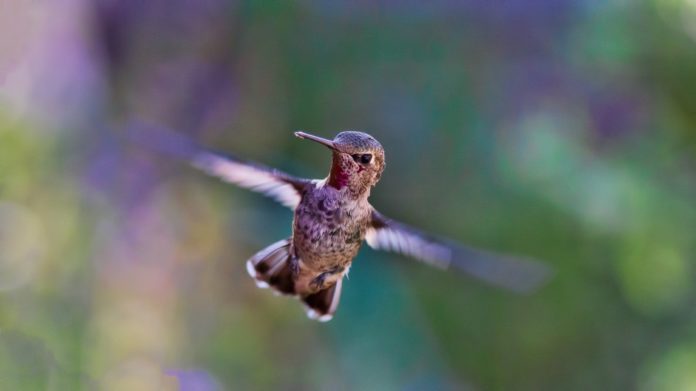Flight is one of the most remarkable adaptations in the animal kingdom and has captivated humans for centuries. Imagine soaring through the air with nothing but the blue sky above you, the world spread out in front of you. We built machines that allow us to experience the rush of flight and the convenience of air travel. Yet, despite our fascination, we still don’t know the details of how birds control flight.
Take turning, for example. There are two ways to make a turn while flying. You can bank your body in the direction of the turn, like an airplane, or you can increase the force on one side, like paddling a kayak. Birds use both of these turning mechanisms, but it’s unclear why one is chosen over another at any particular time.
A team led by Prof. Douglas Altshuler from the University of British Columbia, used hummingbirds, a revolving feeder, and high speed cameras to answer this question.
Fast learners
Hummingbirds are unique, even in the bird world. Depending on the species, a hummingbird can beat its wings from 15-80 times per second! And, because of the circular flapping motion it uses, it is the only bird that can truly fly backwards. In this case, however, the hummingbird is useful because it can be trained to follow the movements of an electronic feeder.
“They are a great animal from which to learn about maneuverability and they’re fast learners,” says lead author Tyson Read.
This allowed the team to specifically monitor the bird’s movements during turns of varying radius and velocity. Radius refers to how tight the turn is – like a hairpin, or long and gradual – while velocity is how fast the turn is taken.
One bird, two turns
The results, published in the Journal of the Royal Society Interface last week, found that the birds controlled turning velocity using body orientation (airplane), but turning radius using asymmetrical wingbeats (kayak).
“It was surprising that hummingbirds have separate methods for generating faster and tighter turns instead of one method for changes in centripetal force,” explains Read.
The authors believe this division of turning mechanisms could be common among all flapping animals.
This study highlights the broad range of movements that flapping animals can use during flight – much more than airplanes or helicopters where the wings are fixed. “Hummingbirds have a lot of flexibility in how they perform a simple maneuver,” says Read.
It seems we still have a lot to learn from our feathered friends.






































